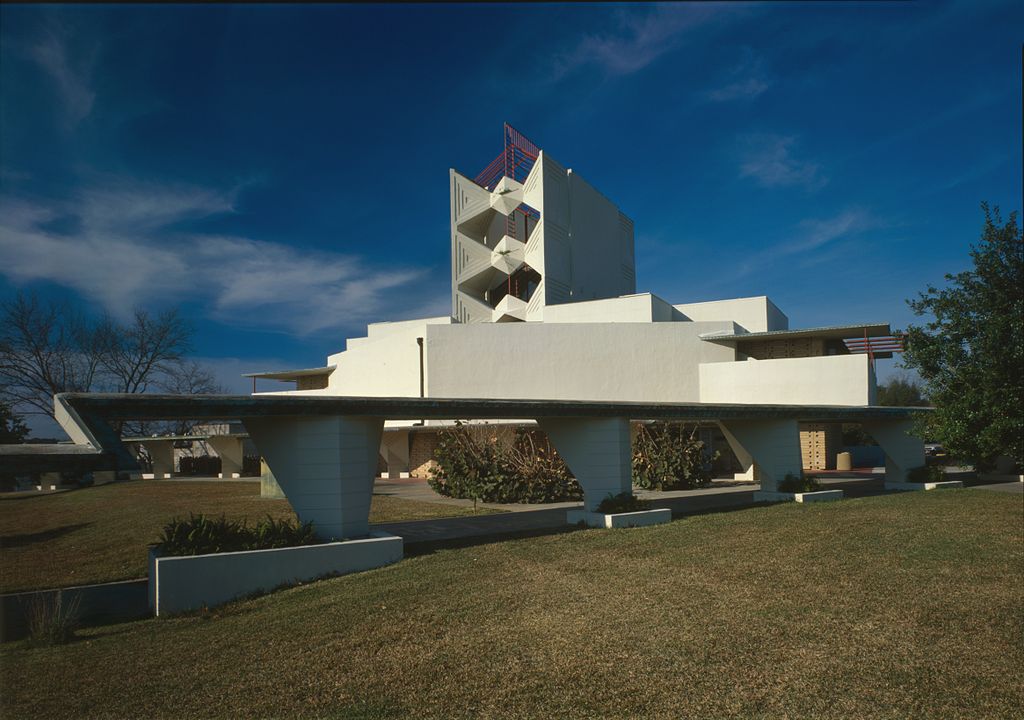Not even a decade ago, the cost to recast the handmade cement block structures of Frank Lloyd Wright’s Annie Pfeiffer Chapel on the campus of a Florida Southern College was prohibitively expensive.
But today, as 3D printing technology improves and becomes more affordable, the Annie Pfeiffer Chapel was recently restored in precise architectural detail, Design Milk reports.
The chapel was constructed using Wright’s signature textile block building system, utilizing student labor in the years between 1938 to 1941. More than 6,000 tapestry blocks decorated into 46 unique designs were individually cast from coquina and concrete.
Thanks to a $50,000 grant from the Florida Division of Historical Resources and a $350,000 grant provided by the Save America’s Treasurers Program of the National Park Service, the chapel’s splendor was restored. The Florida Southern College reports that by using 3D printers purchased with these grants, restorers were able to create molds for the intricate concrete blocks that were originally constructed by hand.
Consistent with Wright’s original design, 2,000 distinctive colored glass tiles were created and inserted into the manufactured blocks.
Learn more on the chapel’s restoration and see the equipment in action at Florida Southern College news.
Related Stories
| Feb 14, 2014
ASHRAE, Green Grid team up on energy-efficiency guide for data centers
Vendor-neutral publication examines aspects of the popular power usage effectiveness (PUE) metric.
| Feb 14, 2014
Scrap tires used to boost masonry blocks at Missouri University of S&T
Research could lead to blocks that use waste material and have seismic and insulating benefits.
| Feb 14, 2014
Giant interactive pinwheel adds fun to museum exterior
The proposed design for the Santa Cruz Museum of Art and History features a 10-foot pinwheel that can be activated by passersby.
| Feb 14, 2014
First look: Kentucky's Rupp Arena to get re-clad as part of $310M makeover
Rupp Arena will get a 40-foot high glass façade and a new concourse, but will retain many of its iconic design elements.
| Feb 14, 2014
Must see: Developer stacks shipping containers atop grain silos to create student housing tower
Mill Junction will house up to 370 students and is supported by 50-year-old grain silos.
| Feb 14, 2014
The Technology Report 2014: Top tech tools and trends for AEC professionals
In this special five-part report, Building Design+Construction explores how Building Teams throughout the world are utilizing advanced robotics, 3D printers, drones, data-driven design, and breakthroughs in building information modeling to gain efficiencies and create better buildings.
| Feb 14, 2014
Crowdsourced Placemaking: How people will help shape architecture
The rise of mobile devices and social media, coupled with the use of advanced survey tools and interactive mapping apps, has created a powerful conduit through which Building Teams can capture real-time data on the public. For the first time, the masses can have a real say in how the built environment around them is formed—that is, if Building Teams are willing to listen.
| Feb 13, 2014
University officials sound off on net zero energy buildings
As part of its ongoing ZNE buildings research project, Sasaki Associates, in collaboration with Buro Happold, surveyed some 500 campus designers and representatives on the top challenges and opportunities for achieving net-zero energy performance on university and college campuses.
| Feb 13, 2014
3 keys to designing freestanding emergency departments
Having physically disassociated from a central hospital, FEDs must overcome the particular challenges associated with a satellite location, namely a lack of awareness, appeal, and credibility. Gresham, Smith & Partners' Kristin Herman-Druc offers three keys to success.
| Feb 13, 2014
Why you should start with a builder
They say the best way to eat an elephant is one bite at a time. Expanding your building or constructing a new structure for your business, church, or school isn’t all that different. Attacking it is best done in small, deliberate pieces.

















